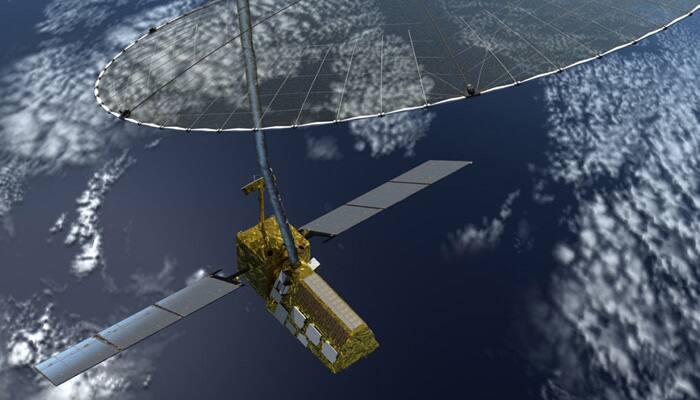New Delhi: The NASA-ISRO Synthetic Aperture Radar, or NISAR satellite, is a joint mission between the US space agency and the Indian space agency to develop the world's most expensive earth imaging satellite.
Interestingly, NISAR, scheduled to launch in 2021 from India, will be placed into the orbit using ISRO's Geo-synchronous Satellite Launch Vehicle (GSLV) - the same rocket for whose cryogenic engine technology the US put sanctions on India.
In May 1992, the US government had slapped sanctions on Indian Space Research Organisation (ISRO), preventing Russia from sharing cryogenic engine technology with the Indian space agency to check India from making missiles.
Following the US sanctions on India, Russia backed out of the deal and ISRO started the Cryogenic Upper Stage Project in April 1994 and began developing its own cryogenic stage.
Two decades later and leaving the past behind, as the Indian and the US space agencies join hands to build the NISAR satellite, here are some key points to know about this dedicated joint mission:
- Using advanced radar imaging, the NISAR satellite, which is the biggest collaboration between the two space agencies yet, will provide an unprecedented detailed view of Earth.
- The satellite is designed to observe and take measurements of some of the planet's most complex processes, including ecosystem disturbances, ice-sheet collapse, and natural hazards such as earthquakes, tsunamis, volcanoes and landslides.
- Data collected from NISAR will reveal information about the evolution and state of Earth's crust, help scientists better understand our planet's processes and changing climate, and aid future resource and hazard management.
- The mission is estimated to cost the two countries over 1.5 billion dollars.
- Scientific instruments or payload of the satellite are: L-band (24-centimeter wavelength) polarimetric SAR (to be produced by NASA) and S-band (12-centimeter wavelength) polarimetric SAR (to be produced by ISRO)
- It is said that the 2,200kg NISAR satellite, once placed into its sun-synchronous dawn to dusk orbit, will map the entire world in 12 days.
To date, GSLV has been used in ten launches since its first launch in 2001 through to its most recent launch on May 5, 2017 of the GSAT 9.
On May 5, 2017, ISRO's Geosynchronous Satellite Launch Vehicle (GSLV-F09) successfully launched the 2230 kg South Asia Satellite (GSAT-9) into its planned Geosynchronous Transfer Orbit (GTO) from Satish Dhawan Space Center, Sriharikota.
















